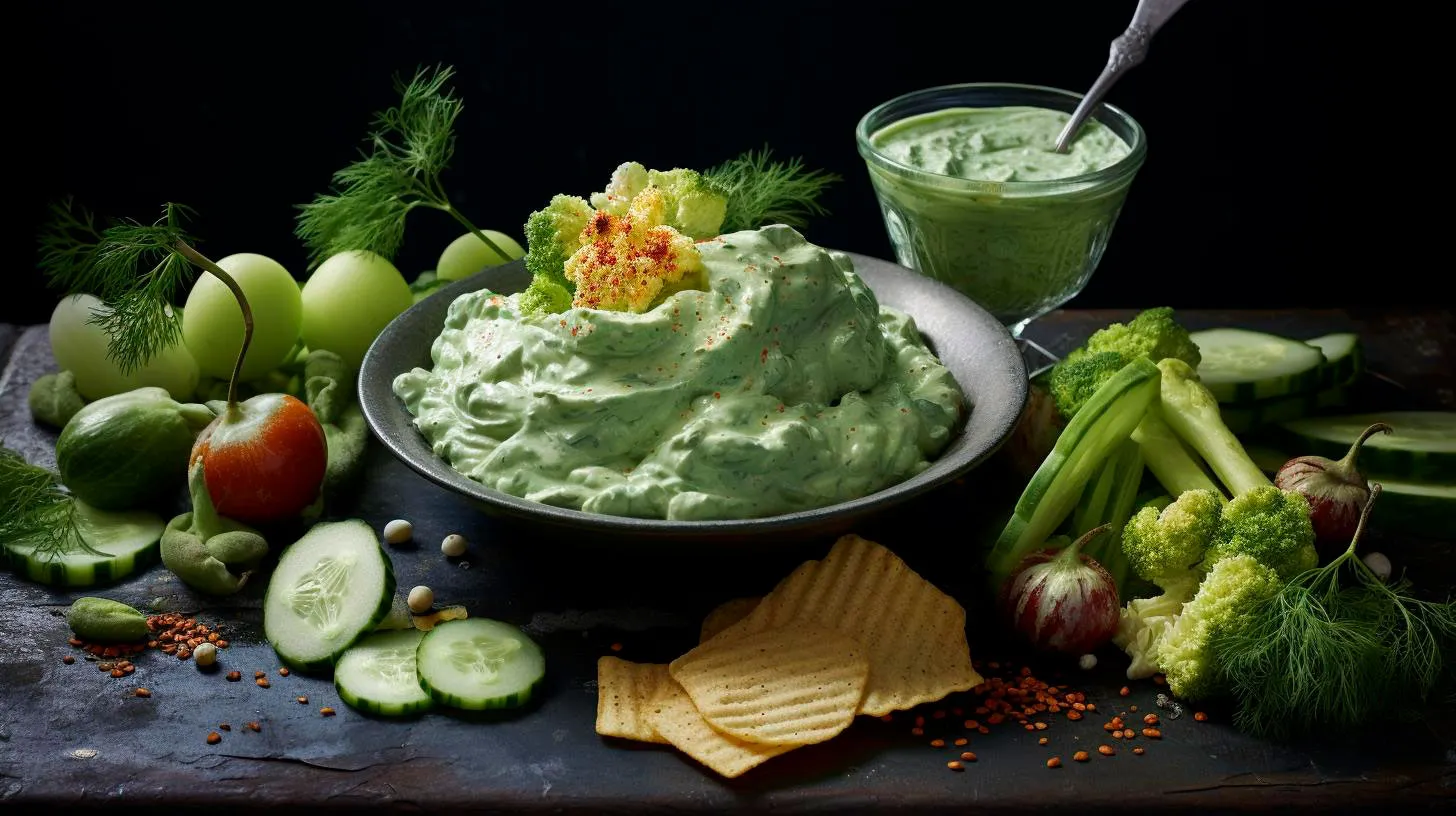Exploring Eco-Friendly Choices: Sushi Connoisseurs Unite
In this article, we will delve into the world of sustainable sushi and explore the various choices available to environmentally conscious food enthusiasts.
The Importance of Sustainable Sushi
Sustainable sushi refers to the practice of sourcing ingredients in ways that minimize harm to the ocean ecosystem and support the long-term health of fish populations. With over 80% of the world’s fish stocks already fully or overexploited, it’s crucial for sushi lovers to make informed choices to protect the delicate balance of marine life. By opting for sustainable sushi, we can play a part in preserving our oceans for future generations.
Now, let’s take a closer look at some key aspects of sustainable sushi:
- Sustainable Sourcing: Sustainable sushi restaurants prioritize sourcing fish from responsibly managed fisheries or those certified by reputable organizations like the Marine Stewardship Council (MSC).
- Seasonal Selections: Choosing sushi made from seasonal fish helps maintain a balanced ecosystem and guarantees the freshest flavors.
- Reducing Food Waste: Sustainable sushi establishments embrace practices that minimize food waste, such as utilizing leftover fish for broths or creatively repurposing ingredients.
- Supporting Local Communities: Restaurants that prioritize local suppliers not only reduce their carbon footprint but also contribute to the economic development of nearby fishing communities.
Plant-Based Alternatives
While traditional sushi typically revolves around fish as the main ingredient, the rise of plant-based alternatives has opened up new avenues for eco-conscious diners. Restaurants are now experimenting with innovative plant-based options that mimic the taste and texture of fish, providing a guilt-free sushi experience. Whether it’s sushi rolls stuffed with avocado, tofu, or even creative combinations like jackfruit “tuna,” the possibilities are endless.
Here are some key takeaways about plant-based sushi options:
- Reducing Environmental Impact: Plant-based sushi helps reduce the demand for traditional fish sources and their associated carbon footprint.
- Innovative Flavors: Plant-based sushi opens up a world of exciting flavors and textures, appealing to both vegetarians and non-vegetarians alike.
- Health Benefits: Plant-based sushi options often boast lower levels of mercury and other contaminants frequently found in seafood, offering a healthier alternative to raw fish.
- Expanding Culinary Palette: Trying plant-based sushi introduces sushi lovers to a wider range of ingredients and encourages culinary creativity.
Sustainability Certification
As consumers increasingly seek eco-friendly choices, sustainability certification schemes have emerged to assist in identifying truly sustainable restaurants. For example, the Sustainable Sushi Initiative (SSI) in collaboration with renowned marine conservation organizations provides certification to responsible sushi establishments. This makes it easier for sushi connoisseurs to make informed decisions and support businesses dedicated to protecting our oceans.
Here’s why sustainability certification matters:
- Trust and Transparency: Certification programs ensure that sushi restaurants meet specific sustainability criteria, providing consumers with peace of mind.
- Encouraging Good Practices: Certification schemes motivate restaurants to adopt sustainable practices and continuously improve their operations to maintain their certification status.
- Consumer Awareness: By supporting certified sushi establishments, consumers can actively contribute to the growth of sustainable fishing practices and raise awareness within their communities.
The Power of Informed Choices
As sushi connoisseurs, our choices can make a significant impact on the environment and the future of our oceans. By exploring eco-friendly sushi options, we can contribute to the conservation of marine life, support local communities, and enjoy delicious sushi guilt-free!
Remember these key takeaways on our journey towards sustainable sushi:
- Opt for sustainably sourced ingredients
- Choose seasonal selections for the best flavors
- Embrace plant-based alternatives for a guilt-free experience
- Look for sustainability certifications to support responsible sushi establishments
Let’s unite as sushi connoisseurs and make mindful choices that leave a positive imprint on our planet!
Understanding Sustainable Seafood: A Sushi Lover’s Guide
In this article, we will delve into the importance of sustainable seafood, how to identify it, and the benefits it provides to both the environment and your taste buds.
The Importance of Sustainable Seafood
Sustainable seafood refers to fish and other marine species that are caught or farmed in a manner that is ecologically responsible and economically viable. It takes into account factors such as fish populations, fishing methods, and the impact on marine habitats. By choosing sustainable seafood, you contribute to the preservation of our oceans and safeguard the future of our aquatic ecosystems.
Key Takeaways:
- Sustainable seafood supports the long-term health of marine ecosystems.
- It ensures the continuity of diverse fish populations.
- Sustainable fishing practices protect marine habitats.
- Choosing sustainable seafood supports the well-being of coastal communities.
How to Identify Sustainable Seafood
Identifying sustainable seafood can seem like a daunting task, especially when faced with a wide array of options at your local sushi restaurant. However, by following a few guidelines, you can make informed choices that align with sustainable practices.
1. Look for Certification
The easiest way to identify sustainable seafood is by looking for certification labels. Two globally recognized certifications are the Marine Stewardship Council (MSC) and the Aquaculture Stewardship Council (ASC). These labels ensure that the seafood you are consuming has been sourced sustainably.
2. Know the Species
Some fish species, such as Atlantic bluefin tuna, are endangered due to overfishing. It is crucial to familiarize yourself with the sustainability status of different species. The Monterey Bay Aquarium’s Seafood Watch program is an excellent resource for identifying sustainable seafood options.
3. Consider the Fishing Method
The way seafood is caught or harvested can have a significant impact on the environment. Certain fishing methods, like bottom trawling, can cause habitat destruction and bycatch. Opting for seafood caught using methods such as pole-and-line or trap fishing helps minimize ecological damage.
4. Support Local and Seasonal Options
Choosing locally sourced seafood encourages sustainable fishing practices and reduces the carbon footprint associated with transportation. Additionally, consuming seafood during its peak season ensures its availability and freshness while supporting local communities.
Key Takeaways:
- Look for certification labels from the MSC or ASC.
- Stay informed about the sustainability status of different fish species.
- Avoid seafood caught using destructive fishing methods.
- Choose local and seasonal options to minimize environmental impact.
The Benefits of Sustainable Seafood
Opting for sustainable seafood not only contributes to the well-being of our oceans but also offers various benefits for both consumers and fishermen.
1. Environmental Benefits
- Promotes the preservation of marine ecosystems and biodiversity.
- Reduces overfishing, allowing fish populations to recover.
- Minimizes habitat destruction and bycatch.
- Supports the overall health of the oceans and their ecosystems.
2. Health Benefits
- Sustainable seafood is often fresher and of higher quality.
- It is free from harmful chemicals and antibiotics commonly found in poorly regulated fisheries.
- Rich in omega-3 fatty acids, which are beneficial for heart and brain health.
3. Socio-Economic Benefits
- Supports local, small-scale fishermen and their communities.
- Provides economic stability for coastal areas.
- Promotes fair trade practices and decent working conditions in the fishing industry.
Key Takeaways:
- Sustainable seafood benefits the environment, your health, and local communities.
- It promotes marine biodiversity and allows fish populations to recover.
- Sustainable seafood is fresher, healthier, and free from harmful chemicals.
- Supporting local fishermen contributes to the economic stability of coastal areas.
Conclusion
As a sushi lover, you have the power to make a positive impact on our oceans and the seafood industry by choosing sustainable options. By understanding the importance of sustainable seafood, knowing how to identify it, and recognizing its benefits, you can enjoy your favorite sushi guilt-free and contribute to a more balanced and sustainable future.
Sustainable Seafood: How Sushi Enthusiasts Can Make a Difference
In this article, we will explore the importance of sustainable seafood, the challenges it faces, and how sushi lovers can make a positive impact.
The Importance of Sustainable Seafood
Sustainable seafood refers to the practice of fishing or farming seafood in a way that minimizes the impact on marine ecosystems, maintains fish populations, and protects the long-term viability of the industry. It takes into account factors such as overfishing, habitat destruction, bycatch, and the overall ecological balance.
By choosing sustainable seafood options, sushi enthusiasts can:
- Contribute to the preservation of marine biodiversity
- Support the livelihoods of fishing communities
- Encourage responsible fishing practices
- Help maintain the overall health of our oceans
The Challenges in Sustainable Seafood
Despite the increasing awareness of sustainable seafood practices, there are several challenges that need to be addressed:
- Overfishing: One of the significant threats to marine life is overfishing. According to the United Nations Food and Agriculture Organization (FAO), over 30% of global fish stocks are either overfished or depleted.
- Illegal, Unreported, and Unregulated (IUU) Fishing: IUU fishing undermines conservation efforts and threatens the sustainability of seafood. It is estimated to account for up to 26 million metric tons of seafood annually, valued at around $23 billion.
- Bycatch: Bycatch refers to the unintentional catch of non-target species. It often includes endangered species such as turtles, seabirds, and dolphins. Bycatch can be reduced through the use of sustainable fishing methods and technologies.
- Consumer Awareness: Many sushi enthusiasts are unaware of the impact their seafood choices can have on the environment. Lack of knowledge and information contributes to the demand for unsustainable seafood.
How Sushi Enthusiasts Can Make a Difference
As sushi enthusiasts, you have the power to drive change and promote sustainable seafood practices. Here are some actionable steps you can take:
1. Educate Yourself
Stay informed about sustainable seafood practices, endangered species, and conservation efforts. Understand the different labels and certifications that indicate sustainable sourcing. Websites like the Monterey Bay Aquarium’s Seafood Watch and the Marine Stewardship Council provide valuable resources and guides.
2. Choose Sustainable Options
When dining out or purchasing sushi ingredients, opt for seafood that is sustainably sourced. Look for labels such as MSC-certified (Marine Stewardship Council) or ASC-certified (Aquaculture Stewardship Council). These certifications ensure that the seafood is responsibly caught or farmed.
- Choose sushi rolls made with sustainable fish such as Alaskan salmon or U.S. Pacific Albacore tuna.
- Avoid species with vulnerable populations, such as Bluefin tuna or Chilean sea bass.
- Consider trying vegetarian or plant-based sushi options to reduce the demand for fish.
3. Support Responsible Restaurants
Choose sushi restaurants that prioritize sustainability and responsibly sourced seafood. Many establishments now prominently display their commitment to sustainable seafood on their menus or websites. By supporting these restaurants, you are encouraging others to follow suit.
4. Engage with Suppliers and Retailers
Ask your local fishmonger or supermarket about their sourcing practices. Encourage them to provide more sustainable seafood options and reward those who make an effort. Your voice as a consumer can influence their supply decisions and promote positive change.
5. Spread the Word
Share your knowledge and passion for sustainable seafood with friends, family, and fellow sushi enthusiasts. Educate others about the importance of making responsible choices, and highlight the impact of their decisions on our oceans.
In Conclusion
As sushi enthusiasts, we can play a crucial role in promoting sustainable seafood practices. By educating ourselves, making conscious choices, and supporting responsible businesses, we can contribute to the conservation of our oceans and the wellbeing of marine life. Every sustainable sushi roll we enjoy is a small step towards making a significant difference.
From Ocean to Plate: A Sushi Expert Take on Responsible Fishing
As a sushi expert, I believe that it is essential to shed light on the significance of responsible fishing in ensuring the sustainability of our oceans and the future of sushi. In this article, we will explore the importance of responsible fishing and the role it plays from ocean to plate.
The Impact of Irresponsible Fishing
Irresponsible fishing practices, such as overfishing and destructive fishing methods, pose a significant threat to our oceans’ delicate ecosystems. With approximately 33% of global fish stocks being overfished, it is evident that action needs to be taken to preserve marine biodiversity and prevent the depletion of essential species.
- Overfishing leads to the loss of biodiversity and disrupts the balance of marine ecosystems.
- Destructive methods, like bottom trawling, damage the seafloor and destroy habitats.
- Unregulated fishing contributes to illegal, unreported, and unregulated (IUU) fishing practices.
To combat these issues, responsible fishing practices and sustainable sourcing are crucial. Let’s delve into some of the key aspects of responsible fishing.
The Elements of Responsible Fishing
1. Regulation and Management
Responsible fishing starts with effective regulation and management of fishing activities. Governments, along with international bodies, play a crucial role in implementing and enforcing sustainable fishing practices. For instance, setting quotas, enforcing size limits, and establishing protected marine areas are important strategies to ensure the long-term viability of fish populations.
2. Selective Fishing Techniques
Adopting selective fishing techniques is vital to minimize the unintended catch of non-target species. Techniques like using fish aggregation devices and modifying fishing gear help reduce bycatch and protect vulnerable species, contributing to the overall sustainability of marine ecosystems.
3. Support for Local and Indigenous Communities
Responsible fishing also involves supporting local and indigenous communities that rely on fishing for their livelihoods. Through responsible practices, these communities can continue their traditional fishing activities while making a positive impact on marine conservation.
4. Traceability and Transparency
Ensuring the traceability and transparency of seafood supply chains is another critical aspect of responsible fishing. Consumers and businesses alike need to have access to accurate information about the origin and sourcing practices of the seafood they consume or serve. This fosters accountability throughout the supply chain and empowers consumers to make informed decisions.
The Benefits and Key Takeaways
Responsible fishing practices have numerous benefits, ranging from environmental conservation to social and economic advantages. Let’s take a look at these key takeaways:
- Sustainable fishing practices help maintain biodiversity and protect marine ecosystems, ensuring their long-term health.
- Responsible fishing supports the livelihoods of local and indigenous communities, preserving cultural heritage.
- Traceability and transparency in seafood supply chains enhance consumer confidence and promote ethical consumption.
- Adopting responsible fishing practices safeguards fish stocks, guaranteeing a continuous supply of quality seafood for future generations.
To put these benefits into perspective, consider the following statistics:
- According to the Food and Agriculture Organization (FAO), sustainable fishing practices can increase fish stocks by up to 40% within a decade.
- A study by the Marine Stewardship Council (MSC) found that seafood-loving consumers are willing to pay up to 11% more for sustainably caught fish.
- The seafood industry employs over 260 million people globally, with responsible fishing practices ensuring the continuity of these jobs.
In conclusion, as sushi enthusiasts, it is our responsibility to support and encourage responsible fishing practices. By choosing sushi establishments that prioritize sustainable sourcing and advocating for responsible fishing regulations, we can contribute to the preservation of our oceans, marine biodiversity, and the future of this beloved cuisine. So, let’s savor sushi while conscious of how it makes its way from ocean to plate.


